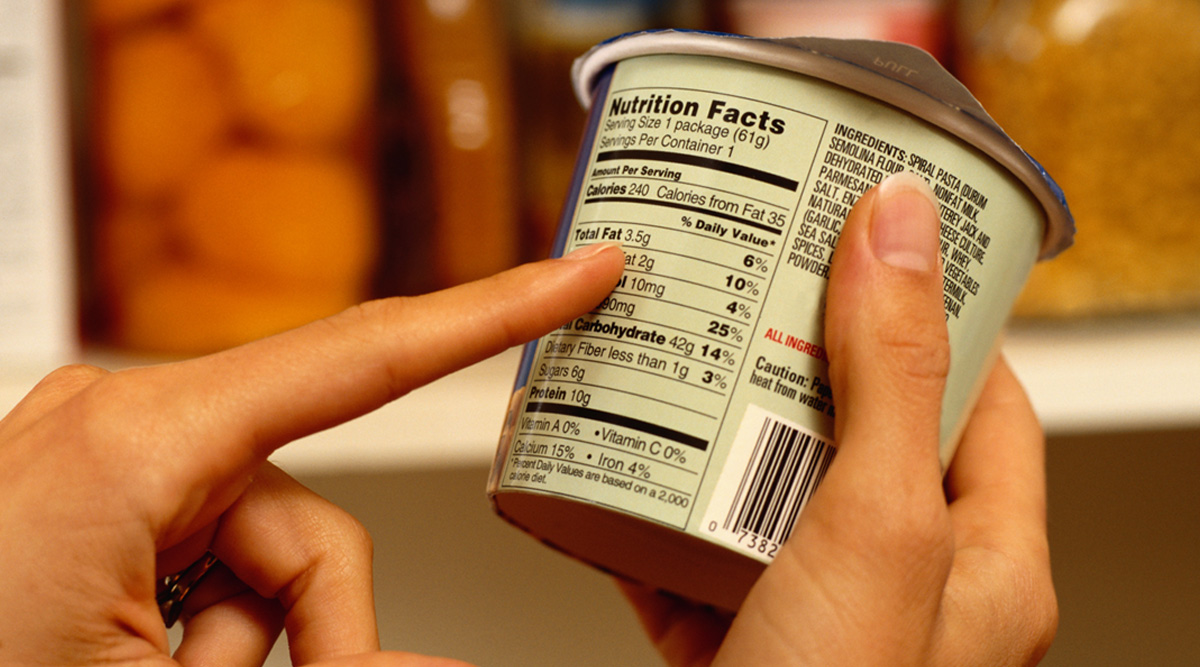The Missing Ingredient in FDA's Proposed Rule
DIALOGUE

May 2023
Volume 77, No. 4

“Eat whatever you like, as long as you manage portion size and frequency.” That’s how I counseled my clients at the Manhattan fitness club where I started out doing nutrition counseling almost 25 years ago.
As a dietitian, my clients have included a wide variety of people—from New York financial service professionals to Medicaid recipients. Audiences can and do change, but my focus on healthy eating has remained the same: Each food decision is only one part of the whole day.
About five years ago, I started working in recipe analysis. I have now run nutrition stats on thousands of recipes—for institutional foodservice and a large grocery retailer, as well as for over a dozen cookbooks. When I was counseling one-on-one, I helped clients make healthy choices within a framework that fit their culture, traditions, preferences, means, and nutrient concerns. I had the luxury of adapting “healthy” to fit an individual.
Things changed when I started working with publishers and institutions. Now I was correcting recipes and adapting marketing messages to fit the rules for healthy eating.
Which is where last fall’s U.S. Food and Drug Administration (FDA) update on the use of the word healthy on food product labels comes in. The stated goal of the 2022 proposed update is to better align the claim to the current Dietary Guidelines. I was excited to see what the FDA proposed, so I rolled up my sleeves and eagerly consumed all 40,000 words, as well as the comments submitted over the next five months.
Most responses were predictable: Business and special interest groups mostly congratulated the FDA. A few independent voices suggested the FDA consider degree of processing and the NOVA food classification system. The Academy of Nutrition and Dietetics restated its 2017 criticism regarding use of the term healthy on individual food products and its position favoring a total diet approach.
Nothing surprised me. Then, on the final day, a lengthy document was submitted by a consortium of CPG manufacturers. That comment was the first to mention the word “palatability” in the context of consumer acceptance. This got my attention.
Palatability was never an issue when I worked with clients because over the course of a day, we could always find a way to balance an indulgence. Working with publishers and institutional foodservice made me aware palatability might be an issue. I remembered those restaurant meals a decade ago promising healthy, but lacking flavor, and the buzz that labeling a menu item healthy was the kiss of death.
To my surprise, I learned recipes listed on the U.S. Department of Agriculture’s own website, MyPlate Kitchen, might not qualify as healthy. I signed into MyPlate Kitchen and did find recipes that would exceed the thresholds set out by the proposed FDA update for sodium, saturated fat, and added sugars.
By now, I was downright uncomfortable. How was it possible that “Big Food” submitted the only comment to acknowledge that food should taste good? Strange bedfellows, indeed.
Since the comments closed, I have gone back and run nutrition stats on my own recipes. Although I favor fresh, seasonal ingredients, and use salt, sugar, and fat in moderation, many of my recipes don’t fare any better than the recipes on MyPlate.
Palatability is a word most dietitians don’t use because our training does not include sensory science. Dietitians learn that a healthy eating pattern includes nutrient-dense foods from all five food groups and low levels of saturated fat, sodium, and added sugar.
Palatability is a word the FDA also does not use. The word does not appear a single time in the 40,000-word proposed update. As both an accomplished home cook and a dietitian, I have a problem with this. Consumers won’t eat food that doesn’t taste good. The degree of restriction required for compliance is a little too austere even for my palate.
Simply put, the proposed FDA update will likely fail to improve anyone’s health while potentially having some unintended consequences. The intention was to encourage people to make healthier choices. But in reality, it runs the risk of alienating them. That serves no one’s interest.
The opinions expressed in Dialogue are those of the author.
Omnivore Podcast
The long-awaited update to FDA’s healthy food label guidelines was unveiled last fall. But dietitian and recipe analyst Linn Steward says the new rules overlook palatability, which could hinder their effectiveness with consumers.
Digital Exclusives

10 Food Trend Predictions for 2022
The editors at Food Technology magazine, published by the Institute of Food Technologists (IFT), have announced their predictions for the hottest food trends for 2022.
Food Technology Articles

Cultivating a Crop of Food System Solutions
Five organizations dedicated to eliminating hunger and sustainably boosting nutrition earn top honors in this year’s Seeding The Future Global Food System Challenge.

GRAS 31 Flavoring Substances
The 31st publication by the Expert Panel of the Flavor and Extract Manufacturers Association provides an update on recent progress in the consideration of flavoring ingredients generally recognized as safe under the Food Additives Amendment.

How to Achieve EPR-Forward Packaging, Part 2
In this two-part series, the author explores the history of Extended Producer Responsibility (EPR), what is needed to help EPR succeed, and how brands can best prepare for EPR.

Future-Proofing Healthy Flours
The authors describe why traditional process of stone milling holds significant advantages over modern milling methods, how the stone milling process works, and the benefits of using a stone mill processing method, including production of flours with higher nutritional and functional value.

Soda With (Possible) Benefits
A look at the prebiotic soda category.
Recent Brain Food
.jpg?mw=500&hash=BDC5A6AEC1D235957E5993C2E1481328)
February Content Spotlight: Health and Nutrition
Stay up to date on the latest health and nutrition topics and trends with IFT's featured resources, from blogs to peer-reviewed articles to on-demand videos.
Tapping the Healing Power of Food
IFT's Anna Rosales reports back on the inaugural Food is Medicine Summit, a key milestone in the national strategy to end hunger and reduce chronic disease by 2030.
January Content Spotlight: Consumer Insights
Stay up to date on the latest consumer insights topics and trends with IFT's featured resources, from blogs to peer-reviewed articles to podcasts.
Championing Food Safety Standards Worldwide
As the U.N.'s Codex Alimentarius Commission marks 60 years, IFT's Codex coordinator describes its impact on the global food system and why IFT members should get involved.
Consumer Outlooks in an Age of Angst
Food Technology Executive Editor Mary Ellen Kuhn explains how tough times will shape consumer behaviors in 2024.


